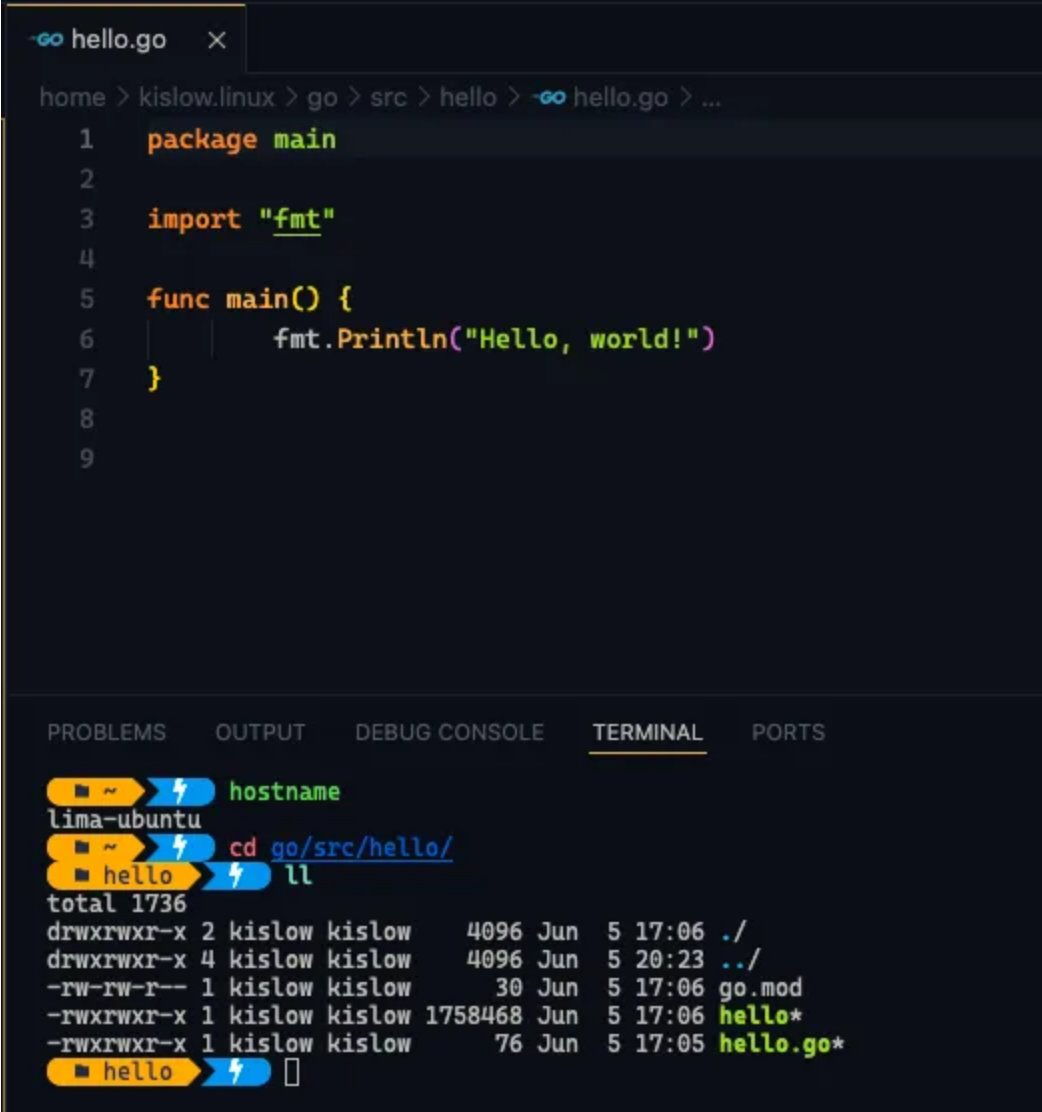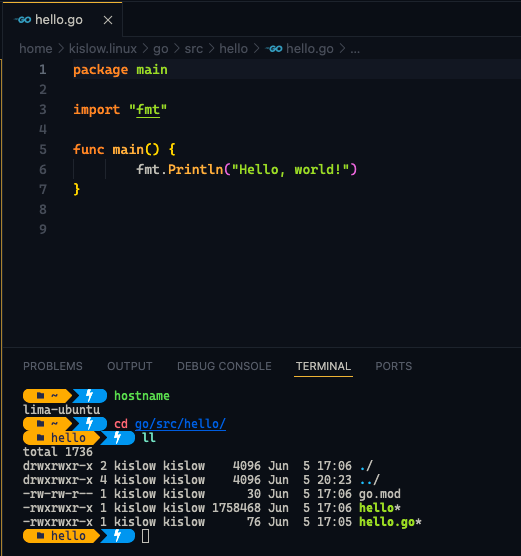Lima
After discovering Lima (a Linux subsystem for macOS), Docker Desktop was the first thing to go and replaced with Docker in Lima. While I won’t get into how to set up Lima in this post, if you are interested in trying out Lima, I can recommend the following links:
- https://github.com/lima-vm/lima
- https://medium.com/@fuzzybsd/how-to-set-up-an-alternative-for-docker-desktop-with-lima-for-mac
- https://itnext.io/replace-docker-desktop-with-lima-88ec6f9d6a19
Developing in Lima
Having started developing on my guest OS, I was hesitant to use vim only. As a result, I began looking for a way to use VSCode with Lima, which ultimately brought me to needing access to my guest files.
To begin with, let’s start our instance:
$ limactl start ubuntu
You can run the following command and check the status of your instance to make sure it’s running:
$ limactl list
> NAME | STATUS | SSH | ARCH | CPUS | MEMORY | DISK | DIR </p>
> ubuntu | Running | 127.0.0.1:2222 | x86_64 | 4 | 4GiB | 30GiB | /Users/kislow/.lima/ubuntu
Having installed all the necessary tools on my ubuntu instance, we can now create a test project that can be accessed through VS Code.
$ mkdir hello
$ cd hello
$ touch hello.go
$ go mod init example/hello
$ cat <<EOF>> hello.go
package mainimport "fmt"func main() {
fmt.Println("Hello, world!")
}
EOF
Prepare the remote ssh access
Step 1: Add the configuration of our instance to the hosts’ ~/.ssh/config file:
$ limactl show-ssh --format config colima >> ~/.ssh/config
Next, we need to retrieve the hostname of the instance:
$ limactl shell ubuntu hostname
lima-ubuntu
Now verify, ssh access from host to guest stance using the hostname only:
ssh lima-ubuntu
Setup VSCode remote access
Install Remote-SSH extention

Go to settings and enable Remote Server Listen on Socket

Connect to the ssh host. You can use the hostname without ssh (e.g. lima-ubuntu)

We now have the ability to use Visual Studio Code with Lima

